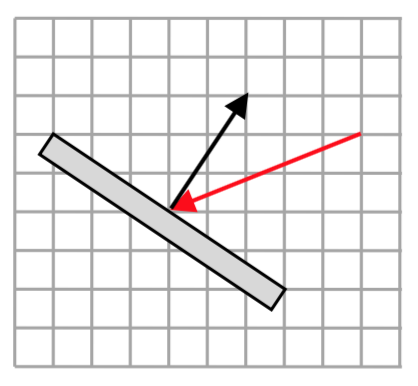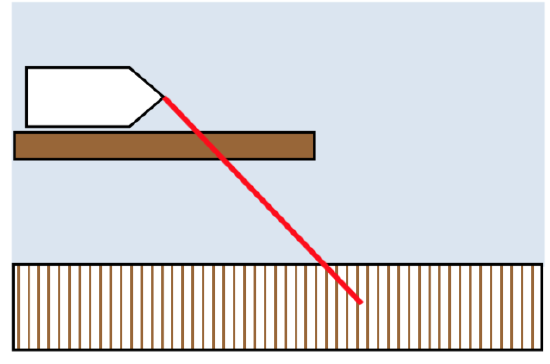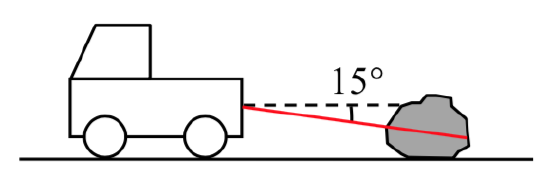8.5.1: Dot Product (Exercise)
- Page ID
- 22246
section 8.5 exercises
Two vectors are described by their magnitude and direction in standard position. Find the dot product of the vectors.
1. Magnitude: 6, Direction: \(45^{\circ}\); Magnitude: 10, Direction: \(120^{\circ}\)
2. Magnitude: 8, Direction: \(220^{\circ}\); Magnitude: 7, Direction: \(305^{\circ}\)
Find the dot product of each pair of vectors.
3. \(\langle 0, 4 \rangle; \langle -3, 0 \rangle\)
4. \(\langle 6, 5 \rangle; \langle 3, 7 \rangle\)
5. \(\langle -2, 1 \rangle; \langle -10, 13 \rangle\)
6. \(\langle 2, -5 \rangle; \langle 8, -4 \rangle\)
Find the angle between the vectors
7. \(\langle 0, 4 \rangle; \langle -3, 0 \rangle\)
8. \(\langle 6, 5 \rangle; \langle 3, 7 \rangle\)
9. \(\langle 2, 4 \rangle; \langle 1, -3 \rangle\)
10. \(\langle -4, 1 \rangle; \langle 8, -2 \rangle\)
11. \(\langle 4, 2 \rangle; \langle 8, 4 \rangle\)
12. \(\langle 5, 3 \rangle; \langle -6, 10 \rangle\)
13. Find a value for \(k\) so that \(\langle 2, 7 \rangle\) and \(\langle k, 4 \rangle\) will be orthogonal.
14. Find a value for \(k\) so that \(\langle -3, 5 \rangle\) and \(\langle 2, k \rangle\) will be orthogonal.
15. Find the magnitude of the projection of \(\langle 8, -4 \rangle\) onto \(\langle 1, -3 \rangle\).
16. Find the magnitude of the projection of \(\langle 2, 7 \rangle\) onto \(\langle 4, 5 \rangle\).
17. Find the projection of \(\langle -6, 10 \rangle\) onto \(\langle 1, -3 \rangle\).
18. Find the projection of \(\langle 0, 4 \rangle\) onto \(\langle 3, 7 \rangle\).
19. A scientist needs to determine the angle of reflection when a laser hits a mirror. The picture shows the vector representing the laser beam, and a vector that is orthogonal to the mirror. Find the acute angle between these, the angle of reflection.

20. A triangle has coordinates at \(A\): (1,4), \(B\): (2,7), and \(C\): (4,2). Find the angle at point \(B\).
21. A boat is trapped behind a log lying parallel to the dock. It only requires 10 pounds of force to pull th e boat directly towards you, but because of the log, you'll have to pull at a \(45^{\circ}\) angle. How much force will you have to pull with? (We're going to assume that the log is very slimy and doesn't contribute any additional resistance.)
e boat directly towards you, but because of the log, you'll have to pull at a \(45^{\circ}\) angle. How much force will you have to pull with? (We're going to assume that the log is very slimy and doesn't contribute any additional resistance.)
22. A large boulder needs to be dragged to a new position. If pulled directly horizontally, the boulder would require 400 pounds of pulling force to move. We need to pull the boulder using a rope tied to the back of a large truck, forming a \(15^{\circ}\) angle from the ground. How much force will the truck need to pull with?

23. Find the work done against gravity by pushing a 20 pound cart 10 feet up a ramp that is \(10^{\circ}\) above horizontal. Assume there is no friction, so the only force is 20 pounds downwards due to gravity.
24. Find the work done against gravity by pushing a 30 pound cart 15 feet up a ramp that is \(8^{\circ}\) above horizontal. Assume there is no friction, so the only force is 30 pounds downwards due to gravity.
25. An object is pulled to the top of a 40 foot ramp that forms a \(10^{\circ}\) angle with the ground. It is pulled by rope exerting a force of 120 pounds at a \(35^{\circ}\) angle relative to the ground. Find the work done.
26. An object is pulled to the top of a 30 foot ramp that forms a \(20^{\circ}\) angle with the ground. It is pulled by rope exerting a force of 80 pounds at a \(30^{\circ}\) angle relative to the ground. Find the work done.
- Answer
-
1. \(6 \cdot 10 \cdot \cos(75^{\circ}) = 15.529\)
3. (0)(-3) + (4)(0) = 0
5. (-2)(-10) + (1)(13) = 33\)
7. \(\cos^{-1} (\dfrac{0}{\sqrt{4}\sqrt{3}}) = 90^{\circ}\)
9. \(\cos^(-1)(\dfrac{(2)(1) + (4)(-3)}{\sqrt{2^2 + 4^2}\sqrt{1^2 + (-3)^2}}) = 135^{\circ}\)
11. \(\cos^(-1)(\dfrac{(4)(8) + (2)(4)}{\sqrt{4^2 + 8^2}\sqrt{2^2 + 4^2}}) = 0^{\circ}\)
13. \((2)(k) + (7)(4) = 0, k = -14\)
15. \(\dfrac{(8)(1) + (-4)(-3)}{\sqrt{1^2 + (-3)^2}} = 6.325\)
17. \((\dfrac{(-6)(1) + (10)(-3)}{\sqrt{1^2 + (-3)^2}}^2) \langle 1, -3 \rangle = \langle -3.6, 10.8 \rangle\)
19. The vectors are \(\langle 2, 3 \rangle\) and \(\langle -5, -2 \rangle\). The acute angle between the vectors is \(34.509^{\circ}\)
21. 14.142 pounds
23. \(\langle 10\cos(10^{\circ}), 10\sin(10^{\circ}) \rangle \cdot \langle 0, -20 \rangle\), so 34.7296 ft-lbs
25. \(40 \cdot 120 \cdot \cos(25^{\circ}) = 4350.277\) ft-lbs


